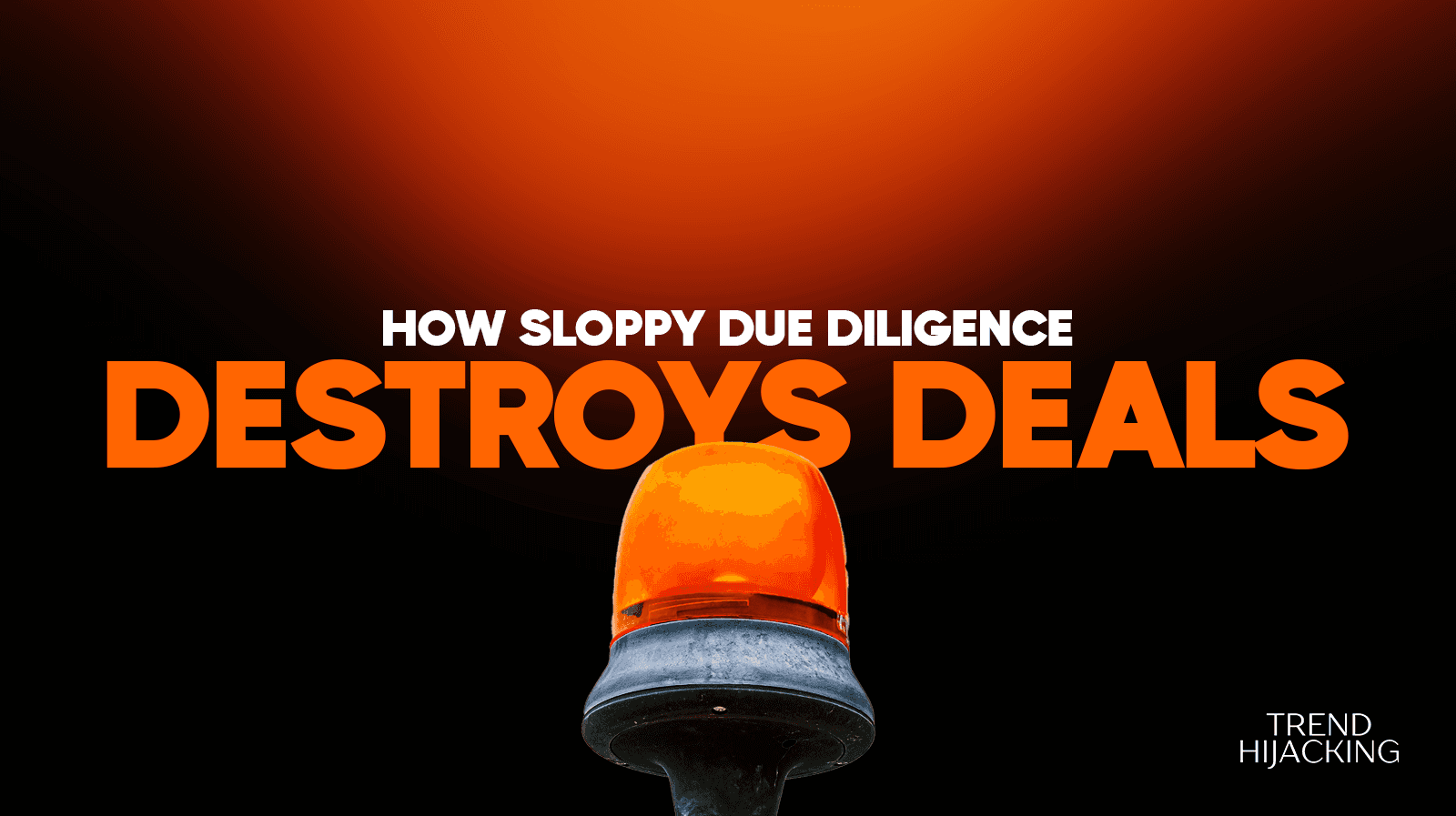How To Verify Traffic Sources When An Buying E-commerce Business
Why Verifying Traffic Sources Matters

Traffic is everything when it comes to buying an e-commerce store. It’s the lifeblood of any online business, including an online store.
The traffic of an e-commerce business directly impacts its sales, revenue, and overall viability.
Think about it: Every visitor who comes to your stores is a potential customer.
Thus, the more the visitors (the more the traffic), the more your opportunities are to convert them into customers.
As we hinted at the beginning of this article, however, all traffic is not equal.
Some sellers have mastered tricks for making their stores appear more profitable than they really are.
Probably the most common way they do this is by inflating the traffic numbers with fake clicks, paid ads, or bots.
At first glance, such a store may look like it's booming.
But if you take your time to verify the traffic, you'll be surprised to find cracks in the foundation.
The ugly side of falling for such tricks is that once those paid campaigns end or the bot traffic stops, your store’s numbers could drastically come down.
And this could leave you with nothing more than a shell of a business and a hole in your pocket.
That’s why we strongly recommend verifying traffic sources before you make any investments.
To ensure you’re making a smart investment, follow the steps outlined below when verifying traffic…
We Help You Buy / Build, Manage and Scale E-commerce Brands for an EXIT
E-commerce Simplified for Busy Individuals – We handle the buying, building, and scaling, so you can focus on what matters.
Growth-Focused Strategies – From sourcing to marketing, we drive growth and prepare you for a profitable exit.
Expertly Managed Exits – We build a high-value brand designed for a Lucrative exit.
Start With Google Analytics

The first step you should ALWAYS take when verifying the traffic of an e-commerce store is to request access to Google Analytics (GA).
Every serious seller should be able to provide you with access without any hesitation. This platform will give you a clear picture of how visitors reach the website.
Ideally, you want to focus on the following insights:
Traffic Channels: Check the source of the traffic. Is it organic search, referrals, paid ads, social media, or direct visits?
Bounce Rate: A higher bounce rate simply means that visitors leave immediately after landing at the store. This is a bad sign as it could mean low-quality or irrelevant traffic.
Session Duration & Pages Per Visit: The more time the visitors spend on the page, the better. Engaged users tend to browse multiple pages and stay longer on the site.
New vs. Returning Visitors: If a store has a high number of returning visitors, this is a good sign of brand loyalty. However, if the site only receives new visitors, it could signal heavy ad spending.
BE CAUTIOUS: If a seller hesitates to provide you with access to Google Analytics, they might be hiding something.
Check Organic Traffic Quality

So you’re looking at a store that claims to get most of its traffic from search engines like Google?
In such a case, you’ll need to verify if this traffic is genuine and sustainable.
How? It’s quite simple…
Tools like Ahrefs, SEMrush, or Ubersuggest will come in handy in this case. They’ll help you analyze the following:
Top-ranking keywords: This will give you an idea of whether the store ranks for relevant, buyer-intent keywords or if it gets traffic from random, low-value terms.
Traffic consistency: You’ll also get to uncover if the store has been enjoying consistent traffic. Ideally, you want a store that enjoys a steady organic traffic curve. But if you notice sudden spikes, it might indicate manipulative SEO tactics that won’t last.
Backlink profile: Go through the external links pointing to the e-commerce website. Do they look spammy? If yes, the site could lose rankings in the event of a Google algorithm update.
REMEMBER, organic traffic is one of the most valuable sources because it’s free and long-term. Just ensure it’s legitimate, so it’s worth investing in.
Analyze Paid Traffic Sources

While this isn’t necessarily a bad thing, understand how much the owner spends and whether the ad campaigns are profitable.
Ask the seller for the following:
Ad account access: Here, you want to check key things like ad spend, cost per acquisition, and return on investment.
Historical ad performance: Check if the store has been consistently running profitable ads, or have they been running aggressive, unsustainable promotions?
Customer acquisition cost (CAC): If the cost to acquire each customer is too high, then the store’s profitability might be at risk.
If you buy a business that entirely depends on ads for traffic, then you’ll need a solid marketing budget to help you maintain its revenue after acquisition.
Evaluate Social Media & Referral Traffic

You’ll also come across some e-commerce stores that get their traffic through social media platforms like Instagram, TikTok, Pinterest, and Facebook.
Others get traffic through referrals from influencers and affiliates.
In this case, you should check essential things like:
Check engagement rates: Even if a business's social media accounts have higher follower counts, they won’t help much if their posts have low likes, shares, and comments. This might even be a sign of fake followers.
Review referral sources: Check whether reputable websites are sending traffic or it is coming from low-quality sites.
Look at influencer campaigns: If the influencers are responsible for driving sales, be sure to check if the partnerships will continue after you take over.
We Help You Buy / Build, Manage and Scale E-commerce Brands for an EXIT
E-commerce Simplified for Busy Individuals – We handle the buying, building, and scaling, so you can focus on what matters.
Growth-Focused Strategies – From sourcing to marketing, we drive growth and prepare you for a profitable exit.
Expertly Managed Exits – We build a high-value brand designed for a Lucrative exit.
Spot Fake or Manipulated Traffic

As we have mentioned earlier, unethical sellers usually inflate traffic numbers to make a store look more attractive.
Watch out for the following:
Traffic that spikes and drops suddenly: If you notice a sharp increase in visits followed by a decline, this could be a sign of a one-time promotion or fake traffic.
Unusual geographic sources: If most of the store traffic comes from irrelevant countries where the store doesn’t sell, something is off.
Very high direct traffic – If a large percentage of visitors are coming directly without a clear referral source, this could be bot traffic.
TIP: Use tools like SimilarWeb and Google Analytics to help you easily detect suspicious traffic patterns before making a purchase.
Final Thoughts
Verifying an online store’s traffic is one of the most critical steps in the due diligence of an e-commerce store for sale. If you skip this step, you may end up with a business that relies on fake, temporary, or expensive traffic sources, leading to a risky investment.
If you’re unsure about how to evaluate the traffic sources of an e-commerce store properly, our team specializes in comprehensive e-commerce acquisitions and due diligence. We can help you spot the best deals, conduct thorough traffic analysis, and ensure you’re investing in a profitable, sustainable business.
Need expert help? Contact us today to make sure you’re acquiring the right e-commerce store!
A Done-For-You E-commerce Business
Discover how we Build, Launch, and Scale a 6-figure/month Business for You
Learn more
The 6-Step Blueprint to E-Commerce Acquisition
See how we Acquire, Convert, and Scale with Real Case Studies to Prove It.
















